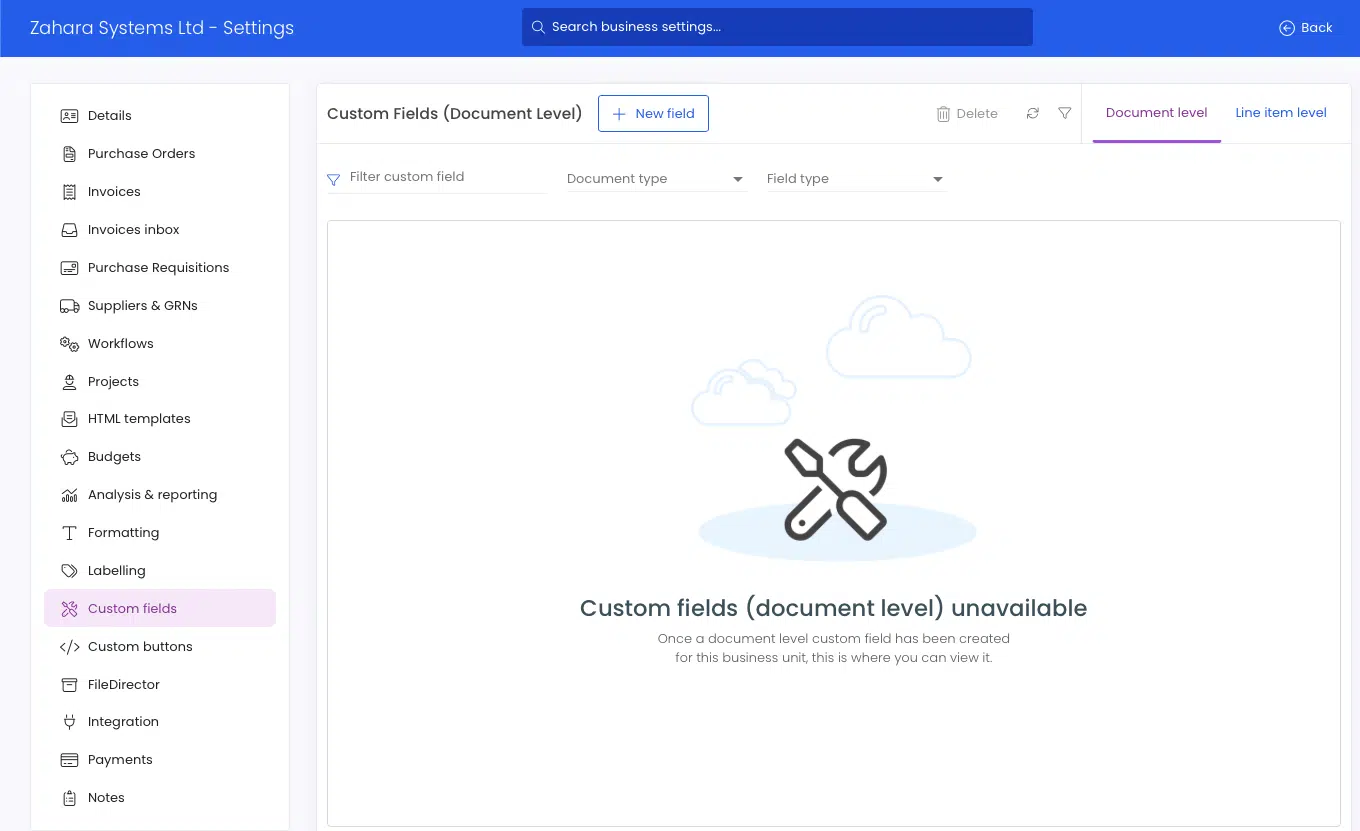Business Unit Category
Add an email signature
Coding Restrictions
Create new Business Unit
Custom Fields on Line Items
Customised labels
Date formating
Default delivery address
Division Management
Editing Email Templates
How to hide cost codes
Invoice email forwarding – Microsoft 365
Pros and Cons of Using Zahara’s Inbuilt Email Service vs. Your Own SMTP
SMTP & Email Sending
T&C on your PO Template
Invoice Processing Help Category
Auto reject supplier invoices
Auto rejecting of invoices issue
Finding an order or invoice
How to create a credit note
Invoice email forwarding – Microsoft 365
Invoice export colours
Invoice Inbox
Invoice List View
Invoice matching
Invoice Processing Explained
Month end cut offs
Negative Order Balance
Setting up Autopilot
Supplier Matching
Waiting for a GRN
Purchase Orders Category
Adding a product to an order
Adding documents to an order
Bulk importing orders
Close Orders Automatically
Closing an order
Copy PO to Buyer
Creating a Purchase Order
Deleting a PO
Duplicate Order Prevention
Editing an order
Finding an order or invoice
GRN an Order – Learn with this Guide
Grouped Purchase Orders
Import Line Items
Negative Order Balance
PO Template Editing
Product Centric Buying
Purchase Order Numbering
Purchase Order PDF
Purchase Order Prefix
Purchase Requisition Number
Quick Create a Purchase Order
Send PO to Supplier
Supplier order acceptance
What is a Purchase Order?
You can create custom fields on the line items of both Purchase Orders and Invoices. These fields can be text based, a date or a select list of options. The values are then stored with the document and can be seen in the line-item reports. We have plans (as of Feb 24) to expand the functionality into our next-gen integrations of Sage Intacct and Dynamics Business Central as well as our existing integrations but as of the release of this feature, the mappings element will follow.
From within Business Settings, (Business > Settings), click into the Custom Fields tab towards the bottom of the left menu. You will see this screen:

In the top right area, click into Line Item Level.
Now click the New Field button.
Step 1. Choose the type of field. You have a choice of Invoice or Order.
Step 2. Give the field a name, placeholder (for use in document templates) and a description.
Step 3. Now decide on the type of field – List, Date or Text.
Your field will now be created when you click Create Field.
If in the create section above you chose List, the field will now be editable in the Coding lists section. In the example below, there is a custom field called Shelf, and this now appears in the Coding List.
From this view you can easily manually type new child entries, or use the import functionality to import a CSV of values as shown here:
As with our other header level custom fields, you can have a hierarchy of fields. An example is below.
We can see some car models here and they have a parent from another field called Makes. This means that the relevant child values are only shown as displayed here on the Create Order page:
Your custom field values are stored with the document and can be seen when you edit or view a record. In addition, under our reporting, you can see the custom field line item values in the line level reports, under Live reports: